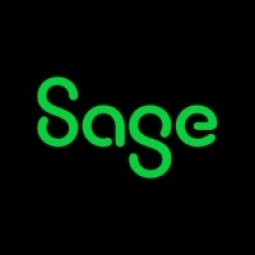Customer Company Size
Large Corporate
Region
- America
Country
- United States
Product
- Sage 100 ERP
- Sage 100 Advanced ERP
- Visual Integrator module
Tech Stack
- T1 wide-area network
- Thin-client architecture
Implementation Scale
- Enterprise-wide Deployment
Impact Metrics
- Productivity Improvements
- Cost Savings
Technology Category
- Application Infrastructure & Middleware - API Integration & Management
Applicable Industries
- Food & Beverage
Applicable Functions
- Business Operation
Use Cases
- Inventory Management
- Supply Chain Visibility
Services
- System Integration
- Software Design & Engineering Services
About The Customer
Yard House Restaurants is an upscale eatery chain that opened its first restaurant along California’s Long Beach waterfront in 1996. The company is known for its great food, classic rock, and the world’s largest selection of draft beer. It has grown to include nine restaurants and was named a Hot Concept by Nation’s Restaurant News in 2002. The company accommodates as many as 250 beers on tap and serves a variety of menu items including Jamaican jerk chicken wings, Caesar salad with seared ahi, and warm chocolate soufflé. The company has over 2,500 employees and seven locations.
The Challenge
Yard House Restaurants, an upscale eatery chain, was facing challenges due to its rapid expansion. The company had outgrown its original QuickBooks package by the time it expanded to a second restaurant. The operations became more dispersed, making it difficult for the IT staff to set up and maintain business systems in remote locations in several states. The company needed a solution that could handle its growing needs and provide centralized control over its operations.
The Solution
Yard House Restaurants selected Sage 100 Standard ERP software as its end-to-end business system after a careful selection process based on its flexibility, reliability, and insightful reporting. As operations became more dispersed, the company upgraded to Sage 100 Advanced ERP to leverage its enhanced LAN capabilities. This allowed the company to run its system across a T1 line, providing a point-to-point connection from headquarters to any site in the enterprise. The company also utilized the Visual Integrator module to post sales, labor, and inventory dollars directly into Sage 100 ERP, enabling it to streamline and achieve incredible efficiencies in both accounting and IT.
Operational Impact

Case Study missing?
Start adding your own!
Register with your work email and create a new case study profile for your business.
Related Case Studies.

Case Study
The Kellogg Company
Kellogg keeps a close eye on its trade spend, analyzing large volumes of data and running complex simulations to predict which promotional activities will be the most effective. Kellogg needed to decrease the trade spend but its traditional relational database on premises could not keep up with the pace of demand.

Case Study
HEINEKEN Uses the Cloud to Reach 10.5 Million Consumers
For 2012 campaign, the Bond promotion, it planned to launch the campaign at the same time everywhere on the planet. That created unprecedented challenges for HEINEKEN—nowhere more so than in its technology operation. The primary digital content for the campaign was a 100-megabyte movie that had to play flawlessly for millions of viewers worldwide. After all, Bond never fails. No one was going to tolerate a technology failure that might bruise his brand.Previously, HEINEKEN had supported digital media at its outsourced datacenter. But that datacenter lacked the computing resources HEINEKEN needed, and building them—especially to support peak traffic that would total millions of simultaneous hits—would have been both time-consuming and expensive. Nor would it have provided the geographic reach that HEINEKEN needed to minimize latency worldwide.

Case Study
Energy Management System at Sugar Industry
The company wanted to use the information from the system to claim under the renewable energy certificate scheme. The benefit to the company under the renewable energy certificates is Rs 75 million a year. To enable the above, an end-to-end solution for load monitoring, consumption monitoring, online data monitoring, automatic meter data acquisition which can be exported to SAP and other applications is required.

Case Study
Coca Cola Swaziland Conco Case Study
Coco Cola Swaziland, South Africa would like to find a solution that would enable the following results: - Reduce energy consumption by 20% in one year. - Formulate a series of strategic initiatives that would enlist the commitment of corporate management and create employee awareness while helping meet departmental targets and investing in tools that assist with energy management. - Formulate a series of tactical initiatives that would optimize energy usage on the shop floor. These would include charging forklifts and running cold rooms only during off-peak periods, running the dust extractors only during working hours and basing lights and air-conditioning on someone’s presence. - Increase visibility into the factory and other processes. - Enable limited, non-intrusive control functions for certain processes.

Case Study
Temperature Monitoring for Restaurant Food Storage
When it came to implementing a solution, Mr. Nesbitt had an idea of what functionality that he wanted. Although not mandated by Health Canada, Mr. Nesbitt wanted to ensure quality control issues met the highest possible standards as part of his commitment to top-of-class food services. This wish list included an easy-to use temperature-monitoring system that could provide a visible display of the temperatures of all of his refrigerators and freezers, including historical information so that he could review the performance of his equipment. It also had to provide alert notification (but email alerts and SMS text message alerts) to alert key staff in the event that a cooling system was exceeding pre-set warning limits.

Case Study
Coca-Cola Refreshments, U.S.
Coca-Cola Refreshments owns and manages Coca-Cola branded refrigerators in retail establishments. Legacy systems were used to locate equipment information by logging onto multiple servers which took up to 8 hours to update information on 30-40 units. The company had no overall visibility into equipment status or maintenance history.



